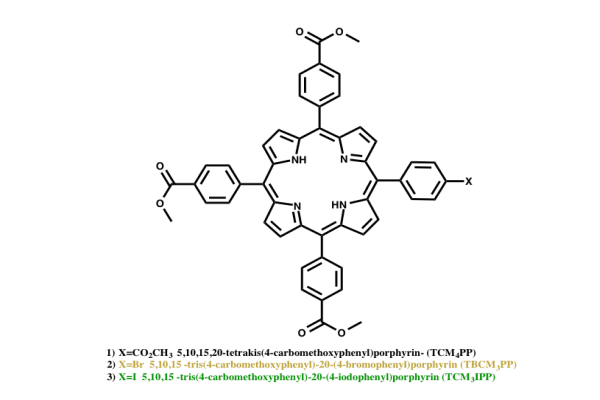Dawn Marin

Dawn Marin

The Synthesis and Photophysical Characterization of Porphyrin Photoactive Materials for Use as Sensitizers in Organic Photovoltaics and Photodynamic Therapy
Abstract:
Solar energy conversion and photodynamic therapy (PDT) are very different applications, however, both utilize very similar photoactive materials called molecular semiconductors. Understanding the structure/function relationship of these materials is crucial for enhancing the energy generation efficiency in molecular solar cells and improving chemotherapeutic activity in PDT. In this dissertation two approaches were applied with the goal of increasing the efficiency of molecular semiconductors for these applications: the heavy atom effect and donor-acceptor molecules. We improved the efficiency of triplet excited state formation and singlet oxygen generation for porphyrin sensitizers using the heavy atom effect. The heavy atom effect induces spin-orbit coupling to promote intersystem crossing into the triplet state. In this study, a carbomethoxyphenyl substituent was replaced with either a bromophenyl or an iodophenyl substituent on 5,10,15,20-tetrakis(4-carbomethoxyphenyl)porphyrin. The longer lifetimes obtained from the increase in the triplet excited state allow for longer exciton diffusion lengths and lower recombination rates in photovoltaics. In addition, enhanced intersystem crossing is beneficial for PDT because it increases singlet oxygen generation, which destroys tumor cells. Optimizing photovoltaic performance and PDT efficacy can also be accomplished with donor-acceptor molecules because they have extended electronic pi bond delocalization across the molecule, which causes the molecule to absorb longer wavelengths of light. Donor-acceptor molecules should produce photovoltaic devices that absorb more of the solar spectrum and produce wavelengths of light that are able to penetrating through tissues to activate PDT sensitizers. Donor-acceptor molecules were synthesized using 5,15-bis(4-carbomethoxyphenyl)porphyrin as the acceptor and thiazolo[5,4-d]thiazole derivatives as the donor. The excited state dynamics of the heavy atom containing derivatives and donor-acceptor molecules were studied using UV-vis spectroscopy, steady state emission, time resolved and delayed photoluminescence.
Sponsoring Chair
: Dr. Michael Walter
Committee: Dr. Marcus Jones, Dr. Thomas Schmedake, Dr. Juan Vivero-Escoto, Dr. Tsing-Hua Her
Defense Date: 4/3/2017 at 3:00:00 PM